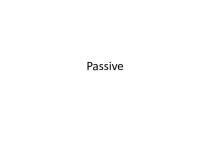- Главная
- Разное
- Бизнес и предпринимательство
- Образование
- Развлечения
- Государство
- Спорт
- Графика
- Культурология
- Еда и кулинария
- Лингвистика
- Религиоведение
- Черчение
- Физкультура
- ИЗО
- Психология
- Социология
- Английский язык
- Астрономия
- Алгебра
- Биология
- География
- Геометрия
- Детские презентации
- Информатика
- История
- Литература
- Маркетинг
- Математика
- Медицина
- Менеджмент
- Музыка
- МХК
- Немецкий язык
- ОБЖ
- Обществознание
- Окружающий мир
- Педагогика
- Русский язык
- Технология
- Физика
- Философия
- Химия
- Шаблоны, картинки для презентаций
- Экология
- Экономика
- Юриспруденция
Что такое findslide.org?
FindSlide.org - это сайт презентаций, докладов, шаблонов в формате PowerPoint.
Обратная связь
Email: Нажмите что бы посмотреть
Презентация на тему High Lift Devices
Содержание
- 2. PURPOSE OF HIGH LIFT DEVICESTo reduce the take-off and landing distances.
- 3. FLAPSA hinged portion of the trailing or
- 4. PLAIN FLAPSimple construction, good increase of lift, but high drag.Mainly used on low speed aircraft.
- 5. SPLIT FLAPIt is a part of the
- 6. SPLIT FLAPLIFT.The split flap gives about the
- 7. SLOTTED FLAPWhen the slotted flap is lowered,
- 8. SLOTTED FLAPPURPOSE to direct higher pressure air
- 9. FOWLER FLAPMoves rearwards and then down, initially
- 10. FOWLER FLAPLIFT Because of the combined effects
- 11. SLOTTED FOWLER FLAPTHE KING OF THE FLAPS
- 12. LEADING EDGE HIGH LIFT DEVICESThere are two
- 13. KRUEGER FLAPThe Krueger flap is part of
- 14. VARIABLE CAMBERLEADING EDGE FLAPSTo improve efficiency by
- 15. LEADING EDGE SLOTA leading edge slot is
- 16. LEADING EDGE SLATA slat is a small
- 17. AUTOMATIC SLOTSOn some aircraft the slots are
- 18. SEQUENCE OF OPERATIONThe leading edge device must
- 19. ASYMMETRY OF HIGH LIFT DEVICESROLL! YAW!
- 20. FLAP LOAD RELIEF SYSTEM
- 21. FLAPS OPERATION
- 22. Скачать презентацию
- 23. Похожие презентации
PURPOSE OF HIGH LIFT DEVICESTo reduce the take-off and landing distances.

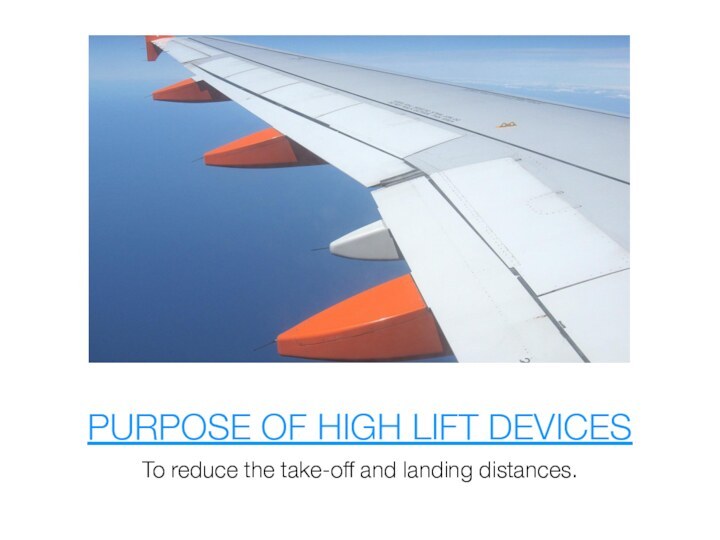
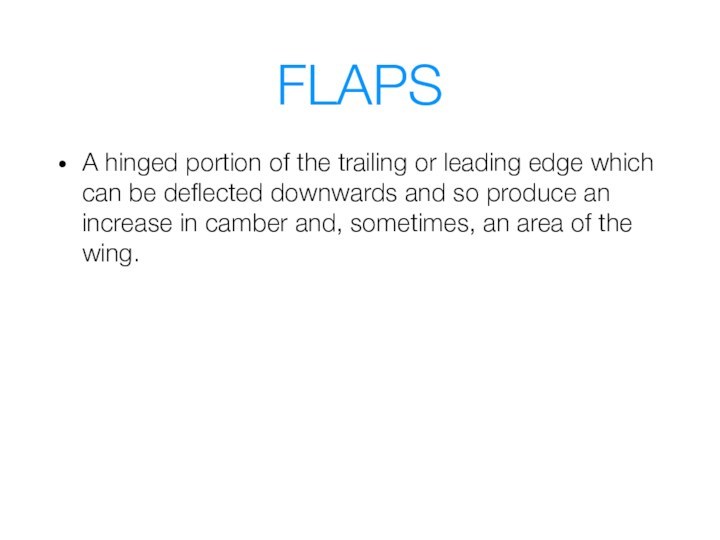
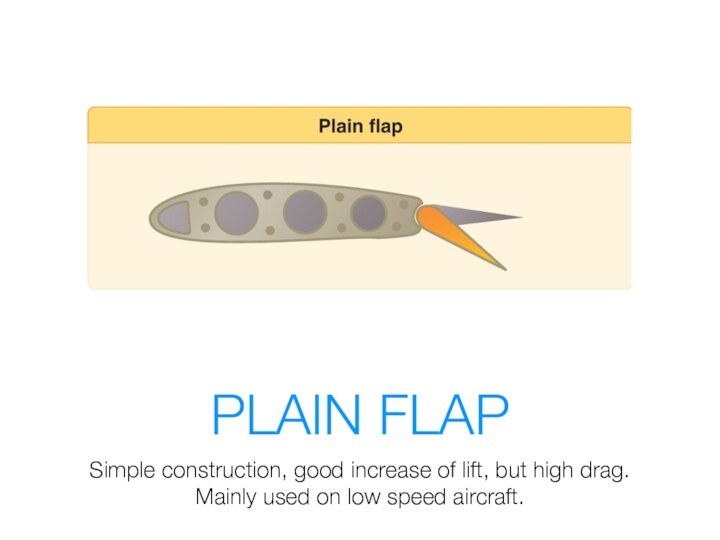
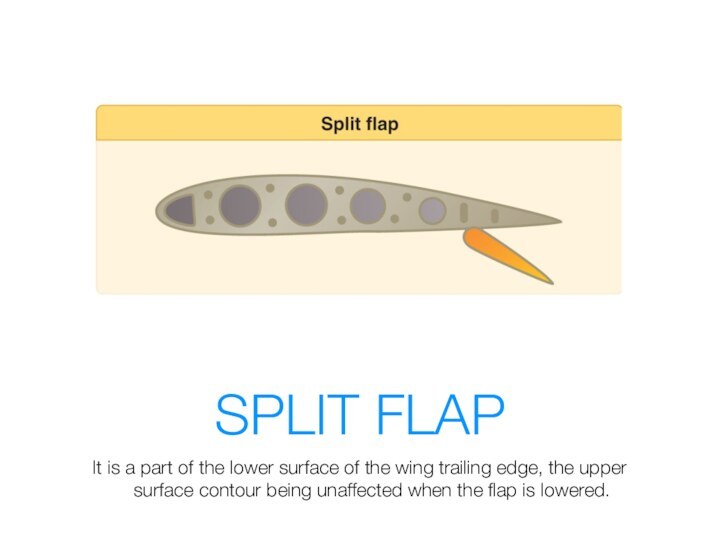
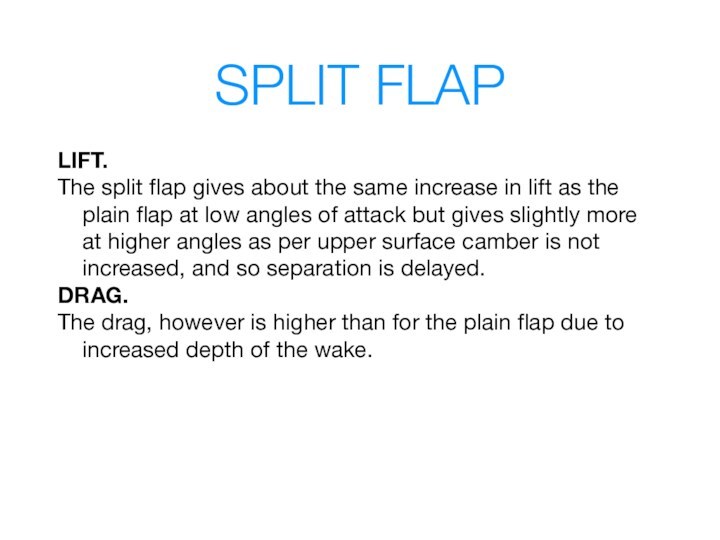
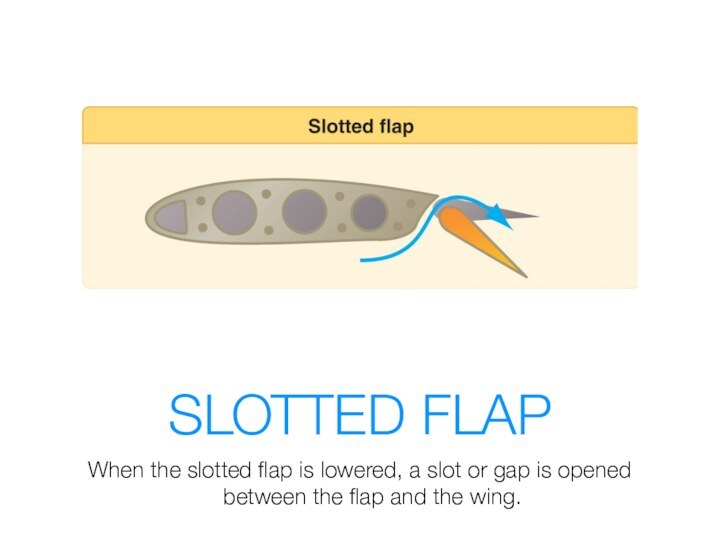
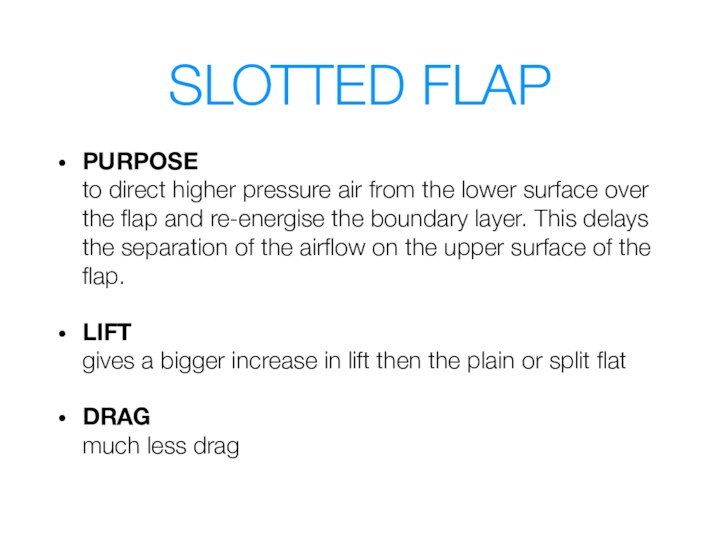
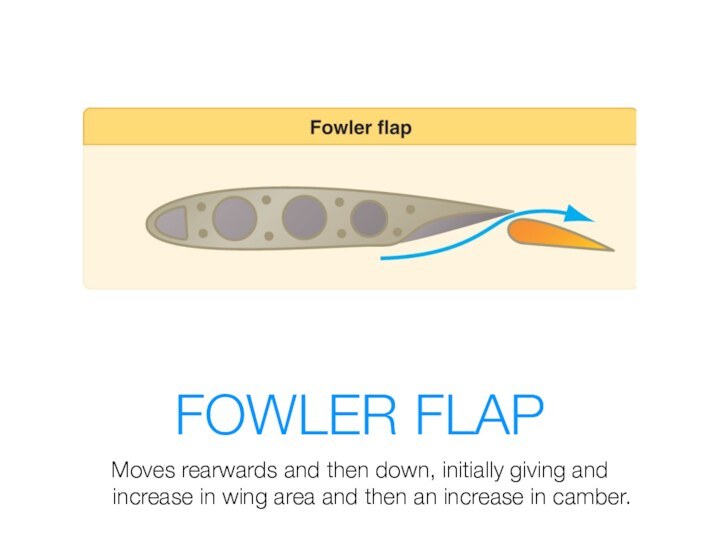

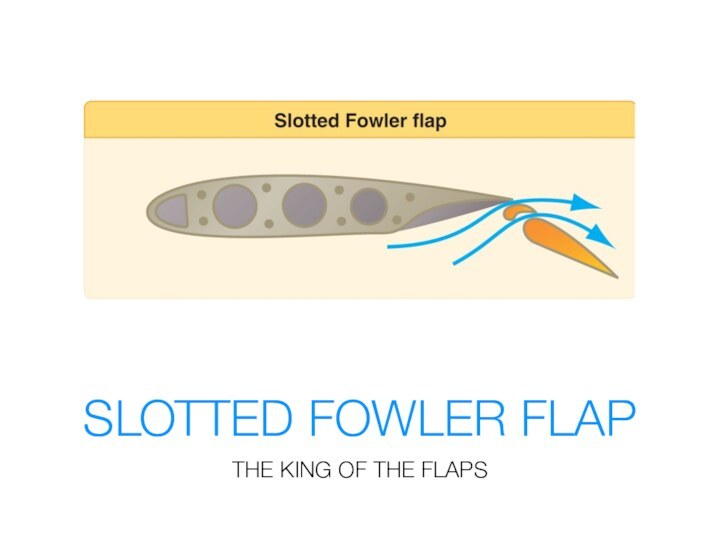
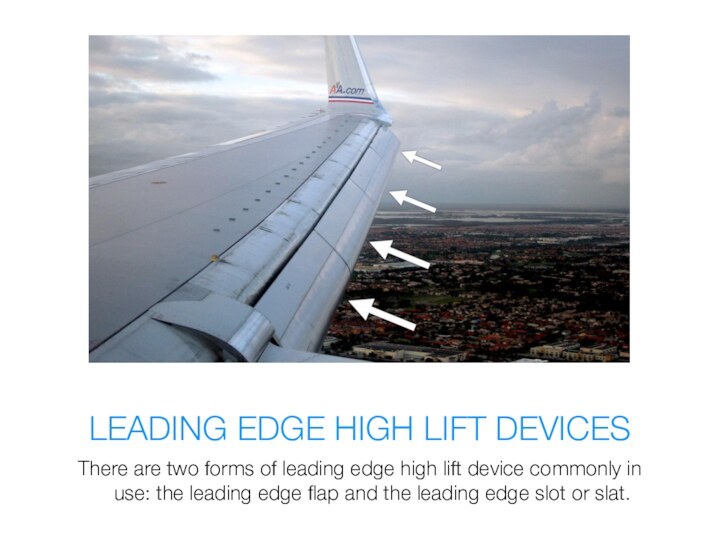

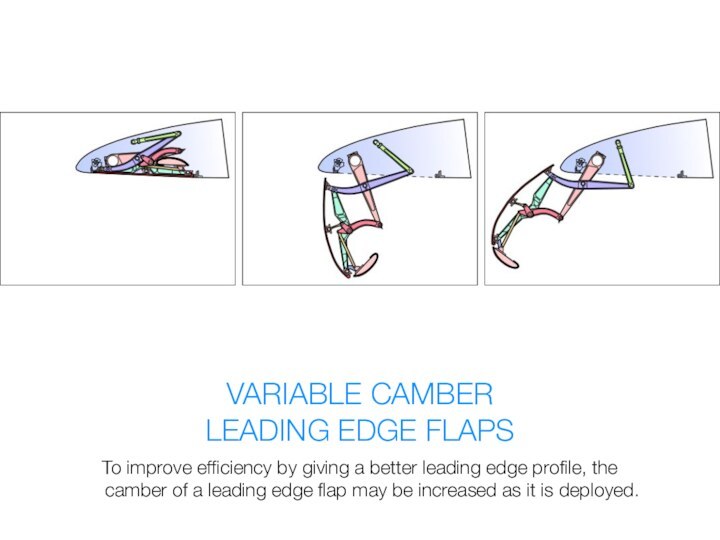
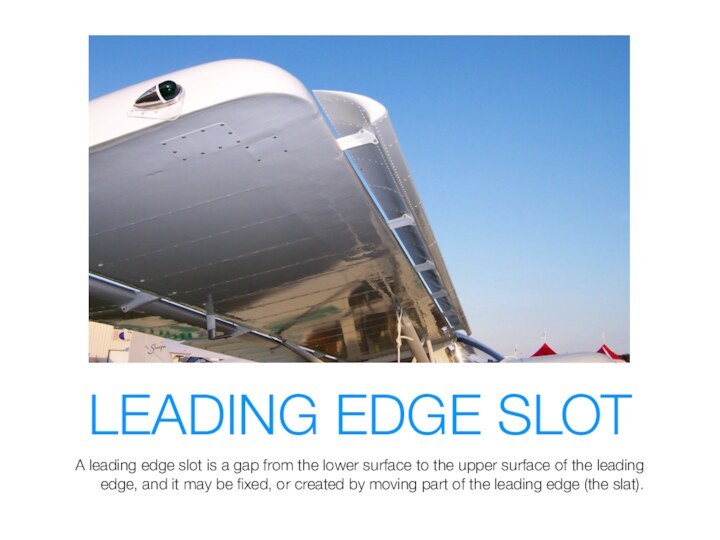
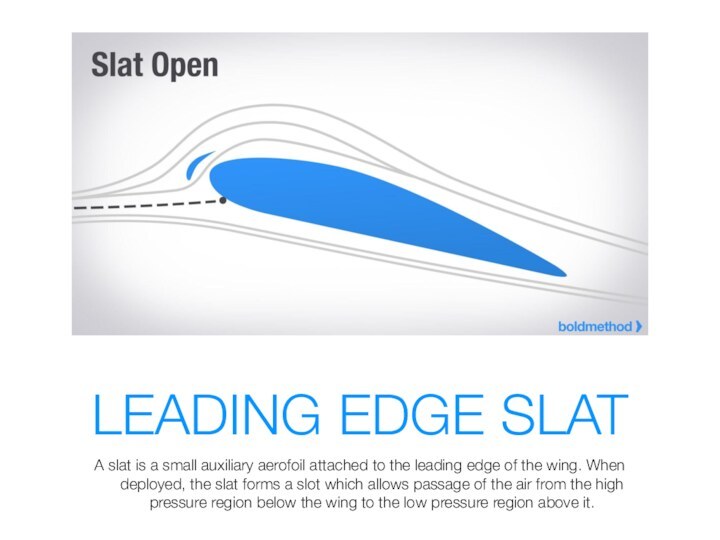

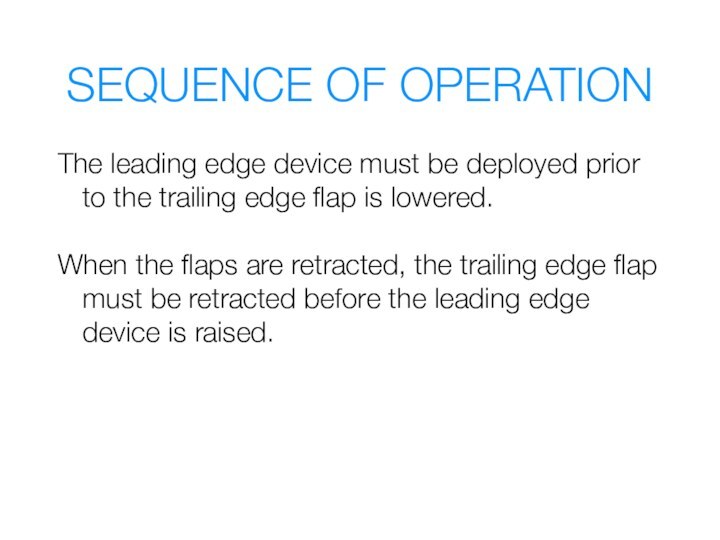
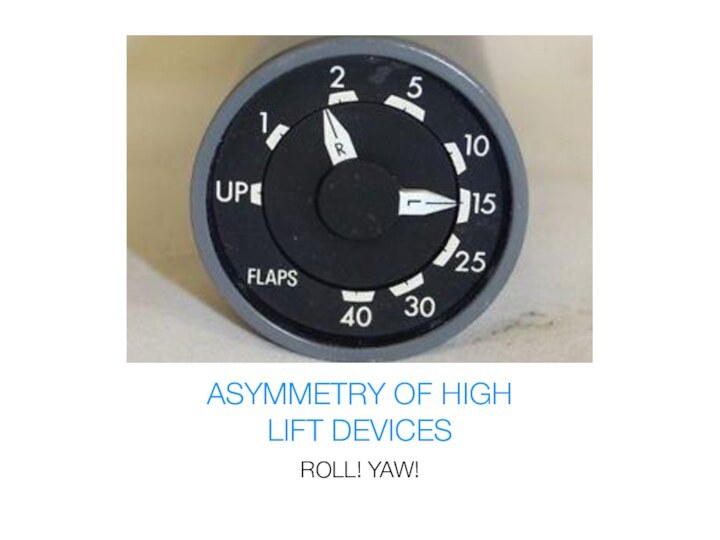

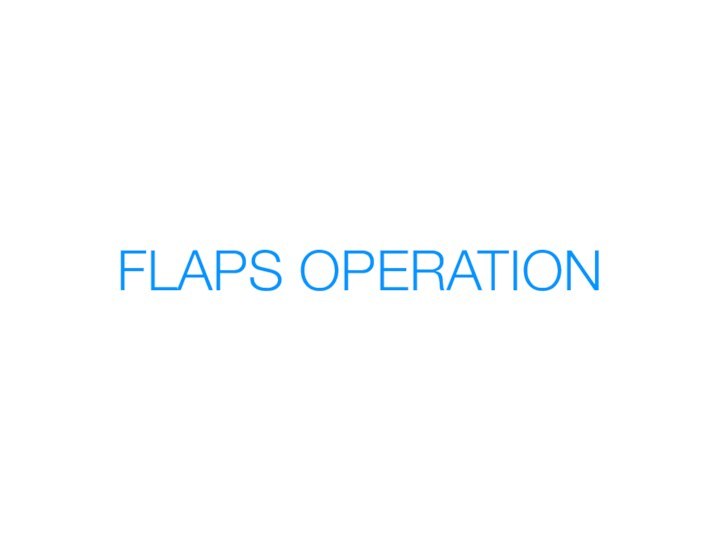

Слайд 3
FLAPS
A hinged portion of the trailing or leading
edge which can be deflected downwards and so produce
an increase in camber and, sometimes, an area of the wing.
Слайд 4
PLAIN FLAP
Simple construction, good increase of lift, but
high drag.
Mainly used on low speed aircraft.
Слайд 5
SPLIT FLAP
It is a part of the lower
surface of the wing trailing edge, the upper surface
contour being unaffected when the flap is lowered.
Слайд 6
SPLIT FLAP
LIFT.
The split flap gives about the same
increase in lift as the plain flap at low
angles of attack but gives slightly more at higher angles as per upper surface camber is not increased, and so separation is delayed.DRAG.
The drag, however is higher than for the plain flap due to increased depth of the wake.
Слайд 7
SLOTTED FLAP
When the slotted flap is lowered, a
slot or gap is opened between the flap and
the wing.
Слайд 8
SLOTTED FLAP
PURPOSE
to direct higher pressure air from the
lower surface over the flap and re-energise the boundary
layer. This delays the separation of the airflow on the upper surface of the flap.LIFT gives a bigger increase in lift then the plain or split flat
DRAG much less drag
Слайд 9
FOWLER FLAP
Moves rearwards and then down, initially giving
and increase in wing area and then an increase
in camber.
Слайд 10
FOWLER FLAP
LIFT
Because of the combined effects of an
increased area and camber, the Fowler Flap gives the
greatest increase in lift of the flaps considered.DRAG The least drag.














